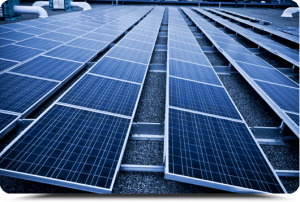 Well, it was bound to happen. With California’s renewable industry taking hold and prices declining, the broader pushback had to begin sometime. Sure, utilities and some ratepayer groups have been decrying renewables for a while.
Well, it was bound to happen. With California’s renewable industry taking hold and prices declining, the broader pushback had to begin sometime. Sure, utilities and some ratepayer groups have been decrying renewables for a while.
But now we’re seeing a new attack from conservatives: renewables will cause “energy poverty” by driving up electricity prices.
Here’s Terry Jones in Investors Business Daily:
California’s policies are, by current engineering and scientific standards, insane. Under its current rules, 25% of the state’s electricity consumption will have to come from renewable sources by 2016. It won’t happen, but it’s the law. By 2020, 33% will have to come from renewable resources. And if Gov. Jerry Brown has his way, it’ll jump to 50% by 2030.
Of course utilities will not meet the standard. But they will try. And doing so, says Lesser, will make electricity more expensive. “When retail consumers subsidize electricity supplies at above-market costs, retail prices inevitably rise, even if the fuel is ‘free,’ ” Lesser wrote. They already have: Since 2004, residential electricity prices are up by more than 30%.
What’s insane is that Jones doesn’t know that California is on pace to well exceed the 33% target by 2020, given all the projects in the pipeline. It’s also insane that Jones doesn’t acknowledge the remarkable price declines in solar (10-20% just last year).
Jones may have a point, however, that rates may increase to reflect the cost of incorporating these new energy sources. It’s unclear by how much, but we should keep in mind two things: 1) low-income ratepayers already are eligible for heavily discounted electricity and other utilities, so they will not be affected, and 2) eligible residents, including the working poor, can get solar on their roofs with no-money down, thanks to the proliferation of solar leases. Those panels can offset rate increases.
And in the long run, what’s the alternative? Keep relying on large-scale, low-employment dirty power, which often pollutes most in the poorest neighborhoods? Or keep pushing on distributed, job-rich solar and wind resources that produce power cleanly and ever more cheaply?
What’s more, the end game here could have a major upside for California’s poor. In addition to the solar jobs that can’t be outsourced and the energy savings from going solar, even with a solar lease, decreasing solar and battery costs means more and more Californians will be able to un-tether from the grid completely. We’re not there yet, but at this rate we’ll be there in the next few decades.
And when that day arrives for everyone, energy will be cheap, clean, and providing major job opportunities for the state that helped make it happen with its forward-thinking policies.
Leave a Reply
You must be logged in to post a comment.


